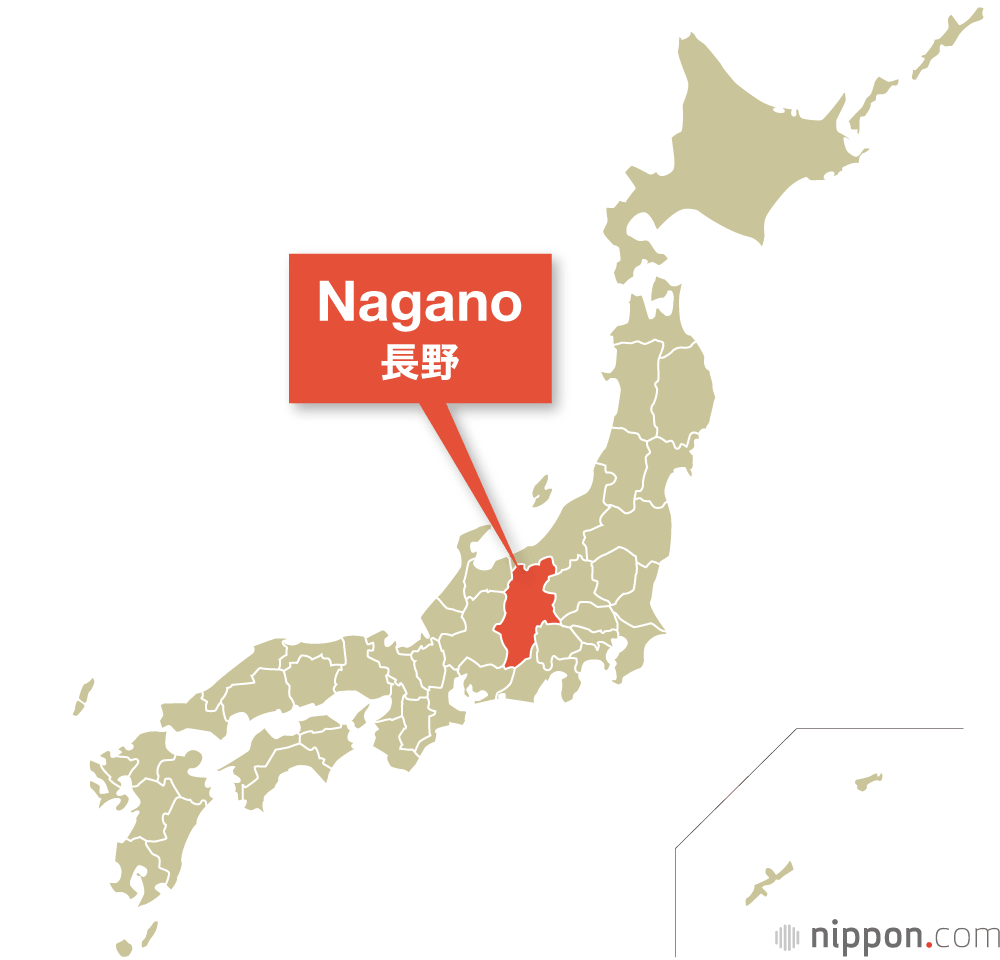
The Prefectures of Japan Nagano Prefecture
Nagano Prefecture Banzai Japan Idol Group Visit there Website Text Text Text Text https://www.youtube.com/watch?v=XHOmBV4js_E

Nagano Prefecture Banzai Japan Idol Group Visit there Website Text Text Text Text https://www.youtube.com/watch?v=XHOmBV4js_E
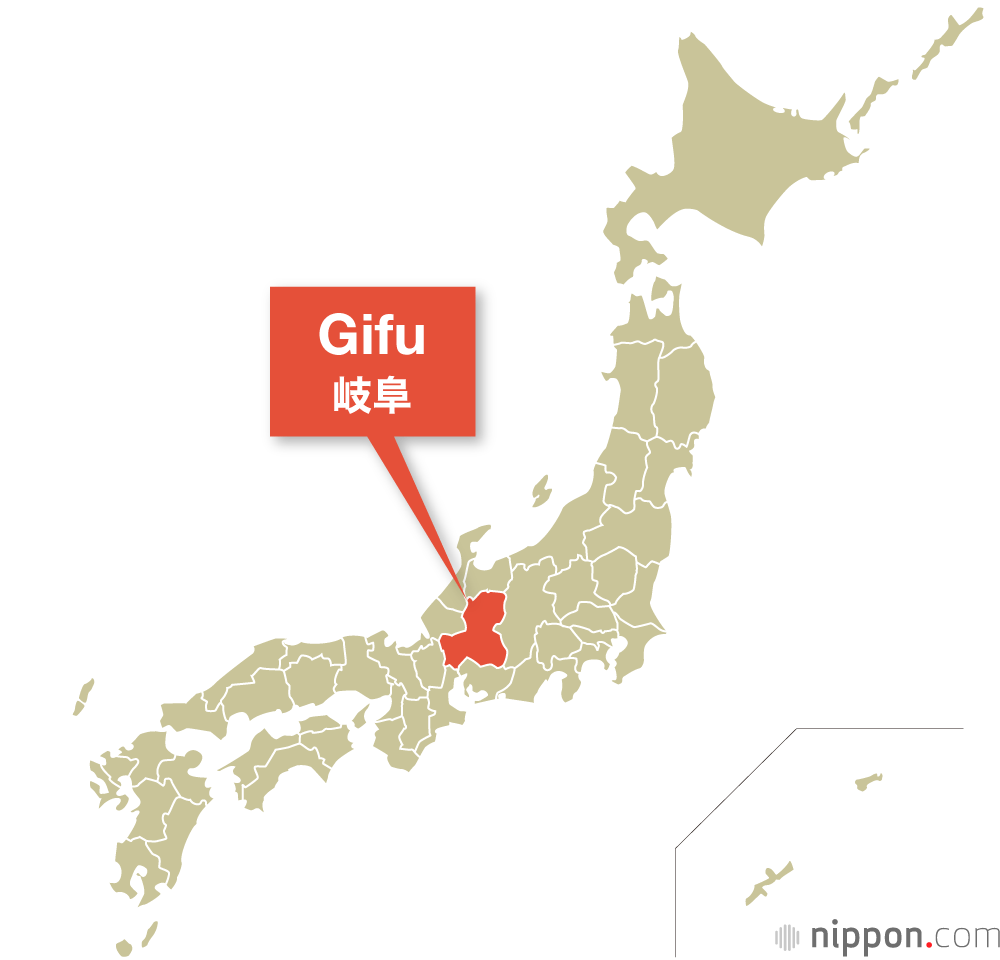
Gifu Prefecture Banzai Japan Idol Group Visit there Website Text Text Text Text https://www.youtube.com/watch?v=XHOmBV4js_E
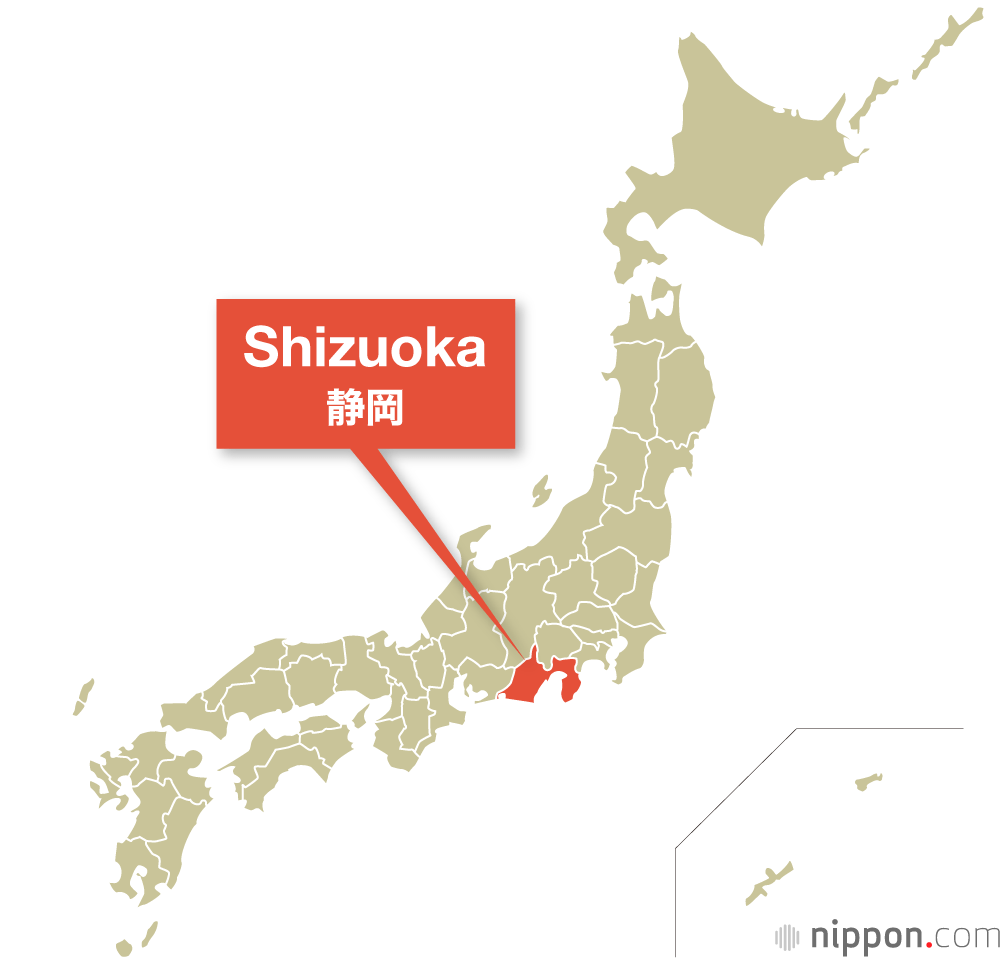
Shizuoka Prefecture Banzai Japan Idol Group Visit there Website Shizuoka Prefecture, on the Pacific coast in central Honshū, is home to some of Japan’s best-known scenery, with beautiful seas and the peak of Mount Fuji on offer. Shizuoka Prefecture is located on the Pacific coast in the Tōkai Region of central Honshū. Predominantly mountainous, the eastern part of the prefecture is dominated by Mount Fuji and the Izu Peninsula, which forms the easterly border of Suruga Bay, and the western half is marked by deep gorges, sandy beaches, and Lake Hamana. Shizuoka Prefecture at a Glance Established in 1876 (formerly Izu, Suruga, and Tōtōmi provinces) Capital: Shizuoka Population: 3,633,000 (as of Oct. 2020) Area: 7,777 km2 Easily reached from the Tokyo metropolitan area, Shizuoka is a popular tourist destination. The rugged Izu Peninsula offers abundant nature, picturesque ocean views, and several famous hot spring resorts, notably Atami, Itō, and Shuzenji. Mount Fuji is a major draw for people from around the world, and the surrounding area offers nature and historical sites, including the Fujinomiya Sengen Shrine, the traditional starting point for ascending the hallowed peak. The Ōigawa Railway has a small fleet of antique steam locomotives that take passengers through a steep valley bordered by tea plantations, and beaches in the southwest offer sand dunes and swells that attract surfers. Shizuoka is a leading producer of green tea, mikan mandarin oranges, and wasabi. It is also noted for eel, cultivated in Lake Hamana and elsewhere, and its forestry products. Metal, machinery, and chemicals, as well as foodstuffs, nutritional supplements, and medical equipment are important manufacturing sectors, as are musical instruments, centering on Hamamatsu. Shizuoka’s official mascot Fujippi is based on the prefecture’s famed mountain and blue seas. Famous Figures Shimizu no Jirochō (1820–93): Entrepreneur, gangster, and folk figure who wielded influence with members of the Meiji government. Toyoda Sakichi (1867–1930): Founder of Toyota Industries and other firms that now make up the Toyota Group. Inoue Yasushi (1907–91): Author known for historical fiction. Born in Hokkaidō, he spent his formative years in Shizuoka. Notable works include Ryōjū (trans. The Hunting Gun) and Tōgyū (trans. Bullfight). https://www.youtube.com/watch?v=mgl0lPR-it4

Aichi Prefecture Banzai Japan Idol Group Visit there Website Aichi Prefecture, roughly in the center of Japan, is rich in history and a powerful modern industrial center, home to Toyota and many associated companies. Aichi Prefecture is situated along the Pacific Coast in the Tōkai Region, approximately in the middle of Japan. Much of the prefecture is taken up by the sprawling Nōbi Plain, the second largest in Japan, which is formed by the Kiso, Ibi, and Nagara Rivers and includes the capital of Nagoya. The Owari Hills extend to the east, and Aichi’s indented coastline follows the Chita Peninsula along Ise Bay in the west to Atsumi Peninsula in the east, with the two headlands forming Mikawa Bay. Aichi Prefecture at a Glance Established in 1872 (formerly Mikawa and Owari provinces) Capital: Nagoya Population: 7,542,000 (as of Oct. 2020) Area: 5,173 km2 Aichi is home to a number of important historic sites, including national treasure Inuyama Castle, one of Japan’s oldest wooden keeps. Near Inuyama is Meiji Mura, an outdoor architecture museum featuring buildings of Japanese and Western design, notably the entryway of the Imperial Hotel designed by Frank Lloyd Wright and the former residence of novelists Mori Ōgai and Natsume Sōseki, among other notable buildings. Nagoya has its own reconstructed castle, several famous art and history museums, and is the location of the important Atsuta Shrine, said to store the sacred sword Kusanagi, one of the three Imperial Regalia. Theme parks Legoland Japan, also in Nagoya, and Ghibli Park in Nagakute attract visitors from Japan and abroad. The auto industry focusing on Toyota Motor Corp., which has its headquarters and several production facilities in the prefecture, is a major contributor to Aichi’s economy. Nagoya and surrounding municipalities make up the Chūkyō Industrial Zone, one of Japan’s three major industrial regions, with manufacturers in fields like transportation equipment, electronics, and steel along with cutting-edge sectors such as aerospace and robotics having bases there. The prefecture is a major grower of staple vegetables like cabbage, tomatoes, and broccoli as well as flowers, in particular chrysanthemums and roses. Aichi’s mascot, Aichīta, first appeared to promote two events hosted concurrently in the prefecture in 2014: the Abilympics, a vocational skills competition for persons with disabilities, and the National Skills Competition. Famous Figures Oda Nobunaga (1534–82), Toyotomi Hideyoshi (1537–98), and Tokugawa Ieyasu (1543–1616): The three warlords who unified Japan during the late sixteenth and early seventeenth centuries. Toyoda Kiichirō (1894–1952): Founder of automaker Toyota Motor. https://www.youtube.com/watch?v=WMPwTa2bCTw
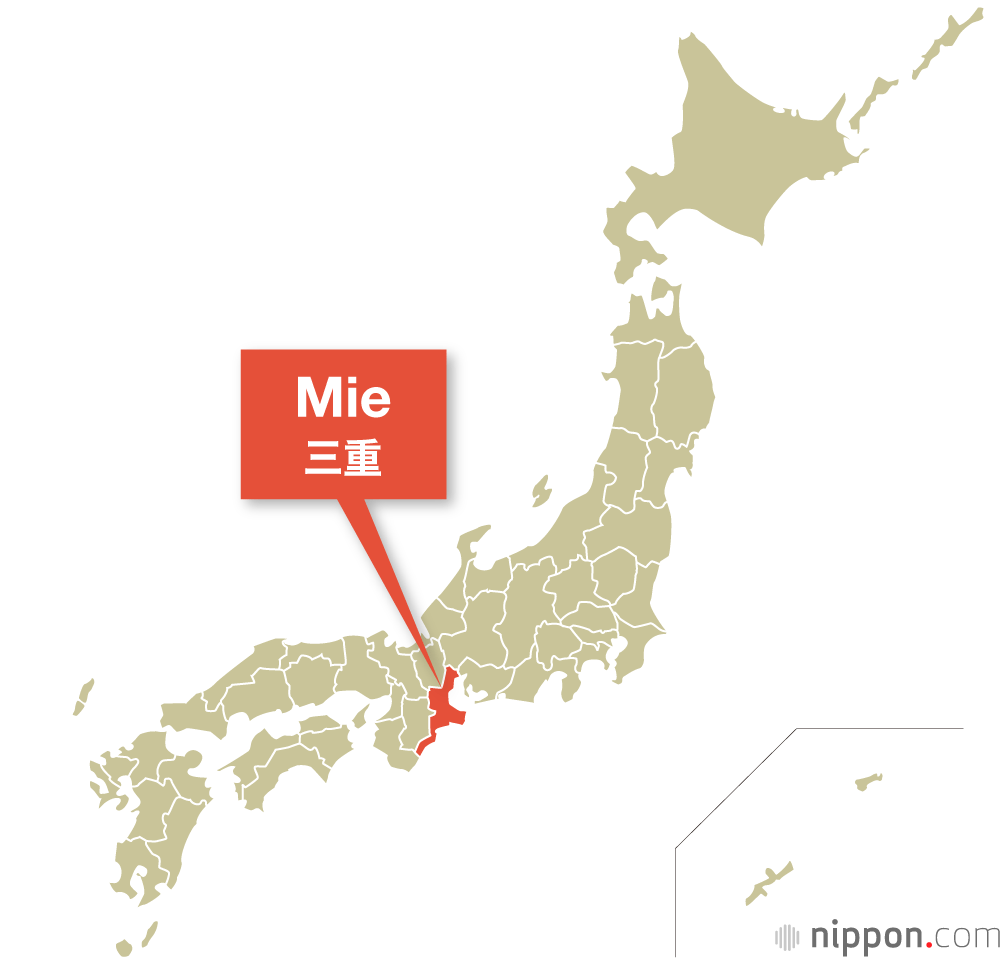
Mie Prefecture Banzai Japan Idol Group Visit there Website Ise Shrine in Mie Prefecture is Japan’s most important center for Shintō, and the prefecture is also known for its ninja and its pearl divers. Mie Prefecture in Tōkai is on the eastern side of the Kii Peninsula on Japan’s Pacific Ocean coast. Several of its cities, including the prefectural capital of Tsu, are located on the Ise Plain in the north of the prefecture. Mount Ōdaigahara in the southwest is known as one of the rainiest places in Japan. Mie Prefecture at a Glance Established in 1876 (formerly Ise Shima, Kii, and Iga provinces) Capital: Tsu Population: 1,770,000 (as of Oct. 2020) Area: 5,774 km2 Ise Shrine, including its main Inner and Outer Shrines, is the most important center for Shintō in Japan. The two main shrines are rebuilt entirely every 20 years, with the most recent reconstruction taking place in 2013. Pilgrims have journeyed to the area for centuries. Iga is famous for its longstanding association with ninja, and visitors to the city can enjoy the Ninja Museum of Igaryū, introducing some of the stealthy spies’ tricks and traps. Mie Prefecture has a robust manufacturing industry, specializing in items such as LCD panels and vending machines. It is known for its cultured pearl industry, initially developed by local businessman Mikimoto Kōkichi (1858–1954). In another marine connection, the prefecture’s traditional female ama freedivers plunge underwater in search of shellfish and other seafood. Famous Figures Matsuo Bashō (1644–94): Poet and travel writer, who was instrumental in the development of the haiku. Edogawa Ranpo (1894–1965): Writer of mystery fiction, known for his uncanny and grotesque themes. Yoshida Saori (1982–): Freestyle wrestler who won gold medals at three successive Olympics, and was the flagbearer for Japan in 2012.
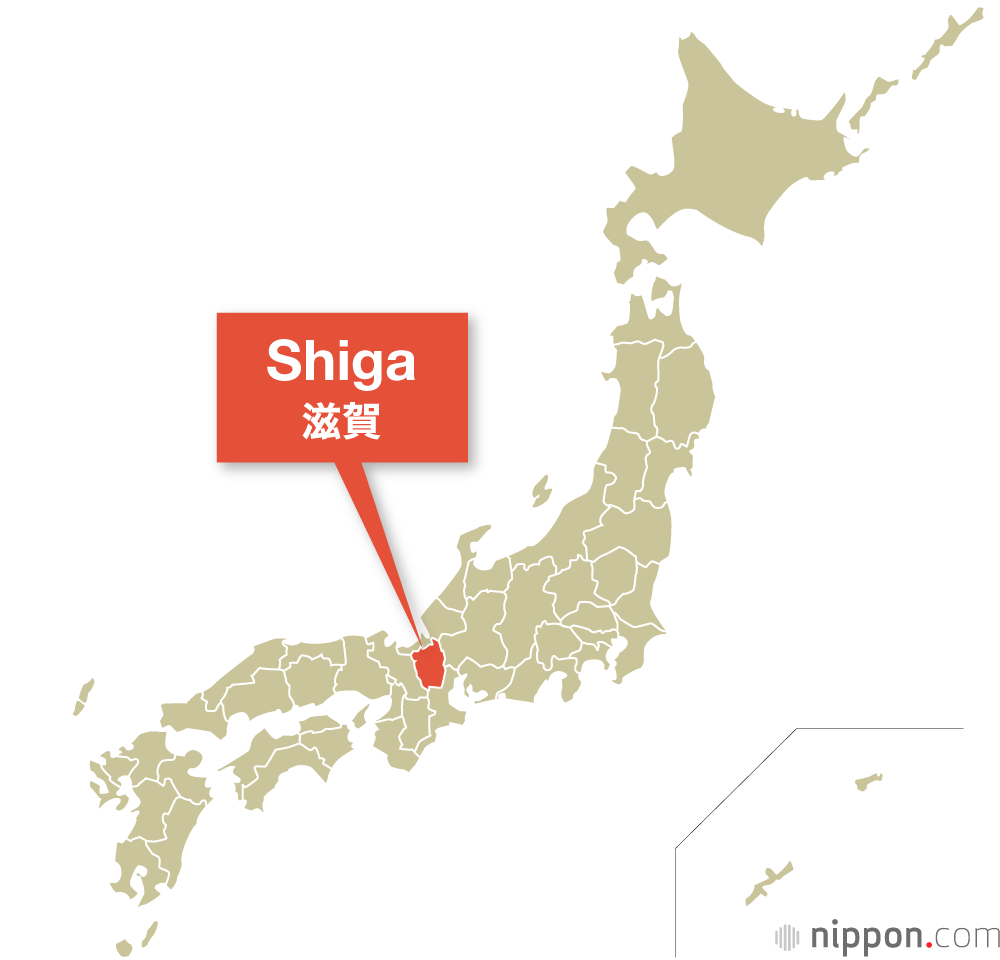
Shiga Prefecture Banzai Japan Idol Group Visit there Website Shiga Prefecture is centered on Lake Biwa, which is Japan’s largest body of fresh water. Funazushi, an early, fermented form of sushi, is made with carp from the lake. Although it is one of a relatively small number of prefectures without a coastline, Shiga Prefecture in Kansai includes Lake Biwa, which is Japan’s largest body of fresh water. The lake lies entirely within Shiga’s borders and accounts for one sixth of its total area. The prefecture is located on a central plain surrounded by mountains. Shiga Prefecture at a Glance Established in 1872 (formerly Ōmi province) Capital: Ōtsu Population: 1,414,000 (as of Oct. 2020) Area: 4,017 km2 Hikone Castle in Shiga Prefecture, one of Japan’s best-preserved castles, was originally built in the early seventeenth century. The hilltop fortress looks out over Lake Biwa, and is a popular spot during cherry blossom season. The small city of Ōmihachiman has a rich history as a hub for transportation, and its picturesque canal area attracts tourists today. Western Shiga, on the border with Kyoto Prefecture, is home to the temple Enryakuji on the mountain Hieizan, the head temple for the Tendai sect of Japanese Buddhism. Secondary industries are an important part of Shiga Prefecture’s overall production, and it specializes in products including hairdressing appliances and scales. Funazushi, an early, fermented form of sushi, is made with funa carp from Lake Biwa, while the local Ōmi beef is a respected wagyū brand. Caffy, the mascot for Shiga Prefecture, is based on the catfish to be found in Lake Biwa. Famous Figures Uno Sōsuke (1922–98): Liberal Democratic Party politician who was one of Japan’s shortest-serving prime ministers, resigning after 68 days in office in June–August 1989. Kiryū Yoshihide (1995–): Athlete who was the first Japanese sprinter to run 100 meters in under 10 seconds. https://www.youtube.com/watch?v=LxR9-DE_Q4U
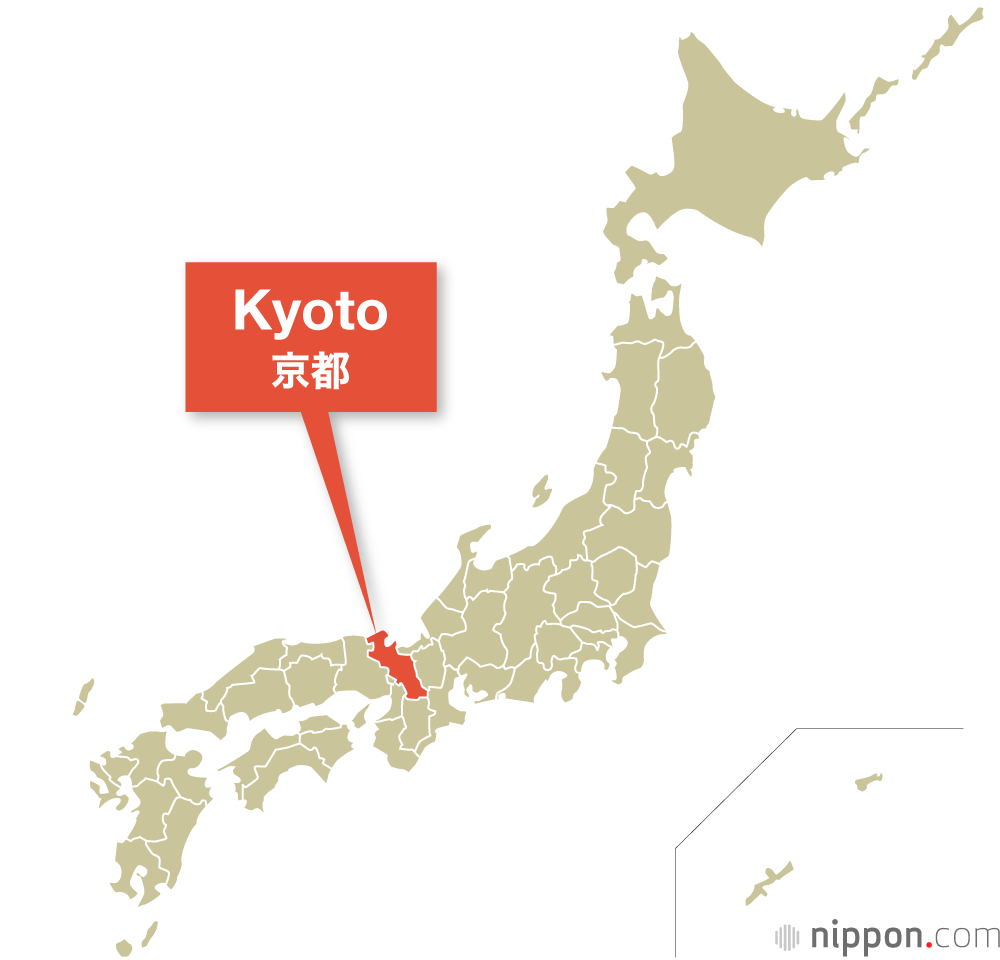
Kyoto Prefecture Banzai Japan Idol Group Visit there Website Kyoto Prefecture is Japan’s cultural center, including the former capital of Kyoto with its plethora of temples and shrines and its large population of practitioners of traditional crafts. As the location for the city of Kyoto, which was the imperial capital of Japan for a millennium, Kyoto Prefecture is steeped in history. It is one of just two urban prefectures (fu), based around the country’s important cities. The city of Kyoto lies in the southern part of the prefecture, and forms part of the heavily urbanized Kansai region center, together with Osaka and Kobe. The prefecture is divided roughly into two parts by the Tanba Mountains, with the north stretching toward the Sea of Japan coast. Kyoto Prefecture at a Glance Established in 1871 (formerly Yamashiro, Tanba, and Tango provinces) Capital: Kyoto Population: 2,578,000 (as of Oct. 2020) Area: 4,612 km2 The city of Kyoto is known for its many temples and shrines, several of which are included in the UNESCO World Heritage site, the Historic Monuments of Ancient Kyoto. Among the most famous, Kiyomizudera dates back for over a millennium and offers a panoramic view of the city from its wooden stage. The Zen temple of Kinkakuji awes visitors with its golden pavilion, and was the model for Ginkakuji, which became associated with the flourishing of Higashiyama culture in the fifteenth century. To the south, Fushimi Inari Shrine is popular for its tunnels of vermilion torii. Floats make a stately progress through the city in the centerpiece of the Gion Festival in July, which is one of Japan’s most famous local observances. In the south of the prefecture, the city of Uji has a notable temple in Byōdōin. Originally the residence of the powerful leader Fujiwara no Michinaga, it later became a temple, and its fame is such that it appears on the ¥10 coin. In the north of the prefecture, Amanohashidate, a narrow sandbar covered in pines, is considered to be one of Japan’s traditional Three Scenic Views. Kyoto has sophisticated versions of many traditional Japanese crafts. Techniques associated with production of kimonos are particularly highly regarded, such as nishijin-ori silk weaving and kyō yūzen dyeing. The city is also known for ceramics, dolls, lacquer ware, and fans. At the same time the prefecture is a center for high-tech industry, and the home of companies like Nintendo and Kyocera. The city of Uji is renowned for its matcha green tea. Mayumaro is the mascot for Kyoto Prefecture, taking its name and appearance from a silkworm cocoon (mayu), due to the use of silk in local kimonos. Famous Figures Dōgen (1200–53): Founder of the Sōtō school of Zen Buddhism. Itami Jūzō (1933–97): Director, known for works including Tanpopo. Wada Emi (1937–2021): Costume designer who won an Academy Award for her work on the Kurosawa Akira film Ran. https://www.youtube.com/watch?v=nGJMwixogyk

Osaka Prefecture Banzai Japan Idol Group Visit there Website Osaka Prefecture, at the center of Japan’s number-two urban conglomeration, is famous for its lively main city, popular castle, and manzai comedy double acts. As the heavily urbanized heart of the Kansai region, Osaka Prefecture is a commercial and cultural center in the west of Japan. It is one of only two urban prefectures (fu); a referendum to reorganize it into a metropolis (to) like Tokyo was narrowly rejected in 2020. Most of the population lives on Osaka Plain. Kansai International Airport is located on reclaimed land in Osaka Bay, in the west of the prefecture. Osaka Prefecture at a Glance Established in 1871 (formerly Settsu, Kawachi, and Izumi provinces) Capital: Osaka Population: 8,838,000 (as of Oct. 2020) Area: 1,905 km2 Historically, the city of Osaka was Japan’s economic powerhouse. As the base for Toyotomi Hideyoshi, who succeeded in unifying Japan in the sixteenth century, it was also a political center for some years. The reconstructed Osaka Castle, originally built by Hideyoshi, attracts millions of visitors each year. The Minami district, especially its lively Dōtonbori street with its giant billboards and copious entertainment and shopping options, has come to symbolize the city today. Among Osaka’s popular food options are takoyaki (octopus pieces fried in batter) and okonomiyaki (a pancake-like dish that may be filled with meat or seafood and vegetables). In the Osaka Bay area of the city are leisure destinations like Universal Studios Japan and Osaka Aquarium. Nearby Sakai is home to the prefecture’s first UNESCO World Heritage site, the Mozu-Furuichi Kofun Group of great tombs, including what is thought to be the burial mound of Emperor Nintoku, traditionally held to have reigned during the fourth century. Major electronics companies like Sharp and Panasonic have their head offices in Osaka Prefecture, but the area is also known for its many small and medium-sized enterprises manufacturing machinery parts and other products. Culturally, Osaka is associated with the bunraku puppet theater tradition that flourished in the city during the Edo period (1603–1868), as well as the quick quips of manzai comedy double acts. The Osaka Prefecture mascot Mozuyan is based on the mozu, or bull-headed shrike, which is the prefecture’s official bird. The suffix yan is an Osaka variation on the standard Japanese janai, usually used to invite agreement. Famous Figures Kawabata Yasunari (1899–1972): Author of Yukiguni (trans. by Edward Seidensticker as Snow Country), and Japan’s first winner of the Nobel Prize in Literature. Tezuka Osamu (1928–89): Manga artist and animator who created Astro Boy and many other famous characters. Ōsaka Naomi (1997–): Tennis player, and the first Japanese player to win a Grand Slam singles title. https://www.youtube.com/watch?v=XHOmBV4js_E
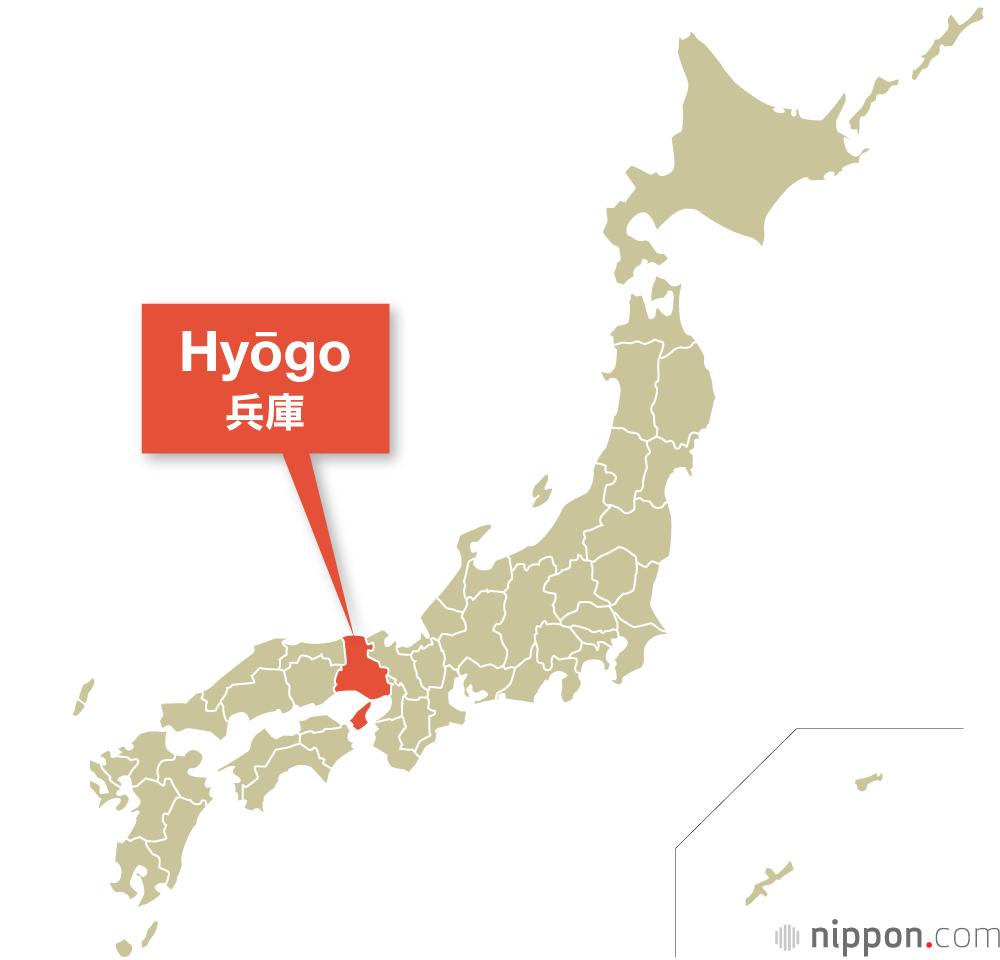
Hyōgo Prefecture Banzai Japan Idol Group Visit there Website Text Text Text Text https://www.youtube.com/watch?v=XHOmBV4js_E
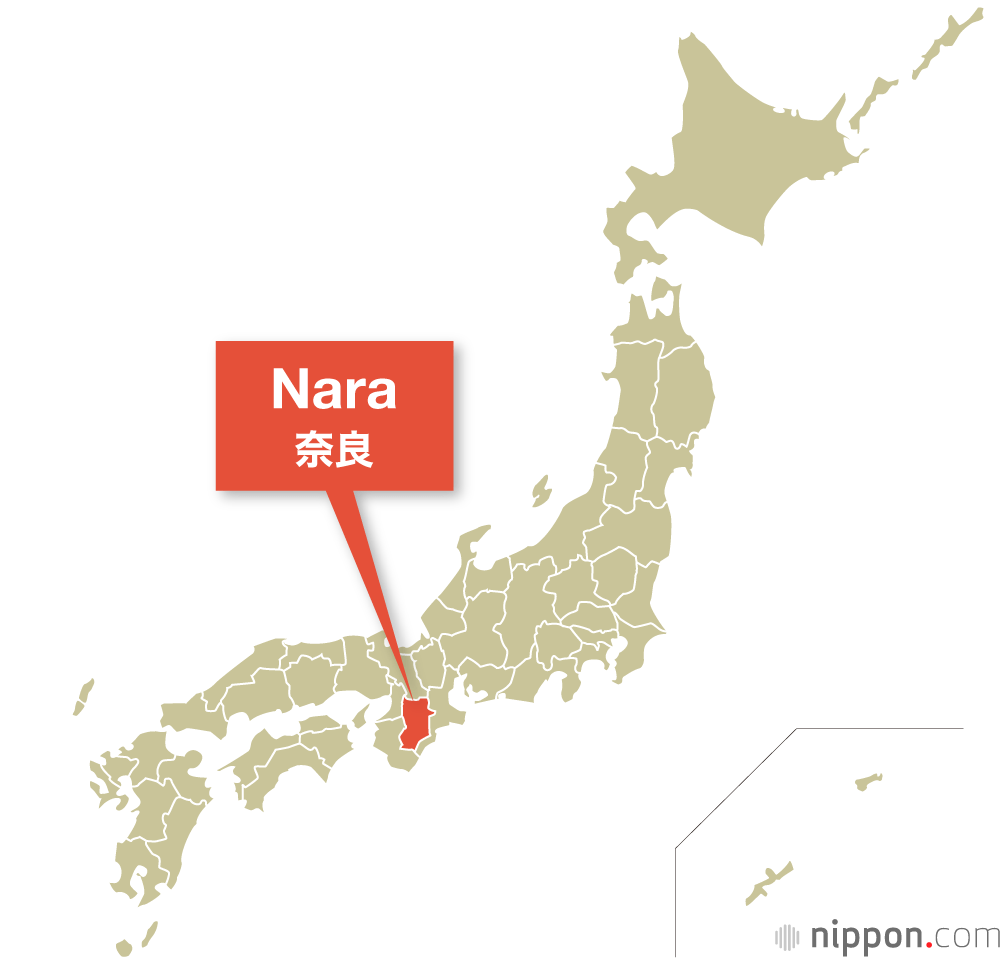
Nara Prefecture Banzai Japan Idol Group Visit there Website The city of Nara in Nara Prefecture was the nation’s capital in the eighth century, and is known for Buddhist sites including the temple of Tōdaiji, famous for its bronze Daibutsu, or Great Buddha, as well as its wandering wild deer. Nara Prefecture in the Kansai region is landlocked and largely mountainous, apart from the Nara Basin in the north. Most people live in this flat northern area, which includes the prefectural capital of Nara and is humid in summer and extremely cold in winter. The Kii Mountains occupy the southern half of the prefecture, including Mount Hakkyō, which is the tallest peak in the Kansai region at 1,914 meters. Nara Prefecture at a Glance Established in 1887 (formerly Yamato province) Capital: Nara Population: 1,324,000 (as of Oct. 2020) Area: 3,691 km2 The city of Nara was the capital of Japan during most of the Nara period (710–94), when the country was greatly influenced by culture imported from China, including Buddhism. Among the major Buddhist sites in the city, the temple of Tōdaiji is famous for its bronze Daibutsu, or Great Buddha, and Hōryūji has some of the world’s oldest surviving wooden buildings. Nara is also known for its wandering wild deer. Further south, Mount Yoshino is Japan’s most celebrated cherry blossom spot. Capitalizing on its long history, Nara Prefecture is a leader in traditional crafts, such as the production of sumi ink and tea whisks. It is Japan’s number one prefecture for the manufacture of socks and baseball gloves, as well as the breeding of goldfish. Remnants of Yoshino sugi (Japanese cedar) trees are also made into disposable chopsticks, another leading local product. One of the more famous prefectural mascots, Nara’s Sento-kun resembles the Buddha with deer antlers, combining two well-known local elements. Famous Figures Takaichi Sanae (1961–): Liberal Democratic Party politician,who has served as minister of internal affairs and communications and minister of economic security. Kawase Naomi (1969–): Director known for films including Sweet Bean and The Mourning Forest, which won the Grand Prix at the 2007 Cannes International Film Festival. Murata Ryōta (1986–): Boxer who won the middleweight gold medal at the London Summer Olympics in 2012. https://www.youtube.com/watch?v=JQEsdyXDoS4

Lorem ipsum dolor sit amet, consectetur adipiscing elit. Ut elit tellus, luctus nec ullamcorper mattis, pulvinar dapibus leo.